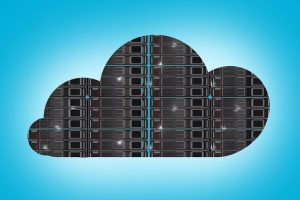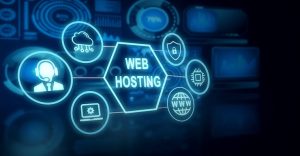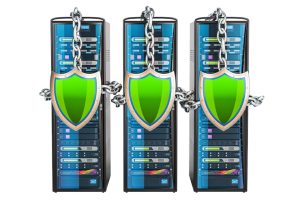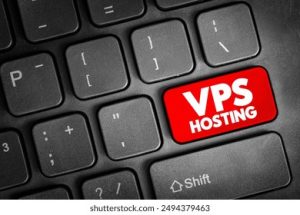cPanel VPS Management: A Beginner’s Guide
Managing Your VPS with cPanel: A Beginner’s Guide
Stepping into the world of Virtual Private Servers (VPS) can seem daunting, but powerful control panels like cPanel simplify server management significantly. This guide is designed for beginners, walking you through the fundamentals of using cPanel to manage your VPS, covering essential tasks like navigating the interface, managing files, setting up email accounts, and understanding key security features. Let’s embark on this journey to unlock your VPS potential.
Understanding Your VPS and cPanel
A Virtual Private Server (VPS) is, in essence, a virtualized server. Unlike shared hosting where you share resources with many other users, a VPS provides dedicated resources – CPU, RAM, and storage – offering greater performance, control, and flexibility. Think of it like having your own apartment within a larger building. You share the building’s infrastructure, but your apartment is entirely yours to customize.
However, managing a VPS directly via the command line (SSH) requires technical expertise. This is where cPanel comes in. cPanel is a web hosting control panel that provides a graphical user interface (GUI) to simplify server administration. It provides an intuitive way to manage various aspects of your VPS without needing to know complex commands. Instead of typing intricate commands, you click buttons and fill out forms.
Why choose cPanel for your VPS?
- User-Friendly Interface: cPanel’s GUI is designed for ease of use, even for beginners.
- Comprehensive Features: It offers a wide range of tools for website management, email configuration, database administration, security, and more.
- Wide Compatibility: cPanel is supported by most VPS providers and integrates well with popular web technologies.
- Third-Party Integrations: A vast library of plugins and integrations, like Softaculous, simplifies application installation.
- Robust Security Features: cPanel includes tools to protect your VPS from common threats.
Before diving into cPanel, it’s crucial to understand the basics of server access. Your VPS provider will typically give you:
- IP Address: The unique address of your server on the internet.
- Root/Administrator Credentials: Login details (username and password) allowing full access to the server.
- cPanel Login Details: A separate username and password specifically for accessing the cPanel interface. This is often, but not always, different from the root access.
Accessing cPanel is usually done through a web browser by navigating to a specific URL, typically https://your_server_ip:2083 or https://your_domain.com:2083 (or port 2082 for a secure connection). Port 2083 is the default, but your provider might use a different port. Ensure you use HTTPS for a secure connection.
Navigating the cPanel Interface & Essential Tools
Once you’ve logged into cPanel, you’ll be presented with a dashboard. The layout might seem overwhelming at first, but it’s logically organized into sections. cPanel uses a feature-rich layout, and versions may slightly differ, although the core functionality remains consistent.
Key Sections:
- Files: This section handles file management – uploading, downloading, editing, and managing files on your server. Key tools here include File Manager (a web-based file explorer) and FTP Accounts (for transferring files via FTP clients like FileZilla). Understanding file permissions (read, write, execute) is crucial for website security and functionality.
- Databases: Here you can create, manage, and administer databases, most commonly MySQL or PostgreSQL. phpMyAdmin is a popular tool for managing MySQL databases, providing a GUI for tasks like creating tables, running queries, and managing users.
- Domains: This section allows you to manage your domains, subdomains, and add-on domains. You can also configure DNS settings, point your domain to your server, and manage SSL certificates. Addon Domains allow you to host multiple websites from a single cPanel account.
- Email: This is where you configure and manage email accounts. You can create new email addresses, set up email forwarders, manage mailing lists, and configure email clients. Webmail provides access to your email through a web browser.
- Metrics: Provides statistics on your server’s resource usage, such as CPU usage, memory usage, bandwidth usage, and website visitors. This helps monitor performance and identify potential issues.
- Security: Offers tools to enhance your server’s security, including SSL/TLS Manager (for installing SSL certificates), IP Blocker (for blocking unwanted IP addresses), and Leech Protect (to prevent hotlinking and bandwidth theft).
- Software: Contains tools for installing software, like Softaculous Apps Installer which allows you to one-click install popular scripts like WordPress, Joomla, and Drupal.
- Advanced: Includes more advanced features like cron jobs (scheduled tasks), backup configurations, and custom error pages.
Essential Tools to Familiarize Yourself With:
- File Manager: The cornerstone of file management. Learn how to navigate directories, upload files (especially important for website updates or installing themes), and edit existing files (use with caution – always back up files before editing).
- phpMyAdmin: Vital for anyone using a database-driven application like WordPress. Understanding basic SQL queries is beneficial, but phpMyAdmin allows managing databases without extensive SQL knowledge.
- Softaculous Apps Installer: Massively simplifies application installation. It handles database creation, file placement, and initial configuration for you.
- SSL/TLS Manager: Critical for securing your website with HTTPS. Let’s Encrypt provides free SSL certificates that can be easily installed through cPanel.
- Backups: Regularly backing up your website and database is *essential*. cPanel offers backup tools, but consider using a third-party backup solution for redundancy.
Managing Files and Databases
Effective file and database management are central to running a successful website on a VPS. Let’s delve deeper into these aspects.
File Management:
The File Manager allows you to interact with your server’s file system directly through a web interface. Understanding the directory structure is paramount.
public_html: This is the root directory for your website files. All the files that visitors see are stored here.home: Your user’s home directory.var/www: Often used as a directory for website files, similar topublic_html.- File Permissions: Each file and directory has permissions that determine who can read, write, and execute it. Incorrect permissions can lead to security vulnerabilities or website malfunctions. Typically, files should have permissions of 644 (-rw-r–r–) and directories 755 (drwxr-xr-x). Use the “Change Permissions” option in File Manager carefully.
Uploading Files: To upload files, navigate to the desired directory within File Manager and click the “Upload” button. You can then select files from your computer to upload.
Database Management (MySQL with phpMyAdmin):
If your website uses a database (like WordPress, Joomla, or Drupal), you’ll need to manage it using a tool like phpMyAdmin.
- Creating a Database: In cPanel, navigate to “MySQL Databases”. Enter a name for your database, and click “Create Database.”
- Creating a Database User: Next, create a user that will have access to the database. Enter a username and password, and assign the user to the database you just created with “ALL PRIVILEGES.”
- Importing a Database: If you already have a database backup (e.g., a .sql file), you can import it into your newly created database using the “Import” tab in phpMyAdmin.
- Managing Tables: phpMyAdmin allows you to create, modify, and delete tables within your database. It also allows you to view and edit the data stored in those tables.
- Backing up Databases: Regularly back up your database to prevent data loss. phpMyAdmin allows you to export your database as a .sql file.
Important Database Security Note: Never use the `root` user for your web applications. Always create a dedicated database user with limited privileges.
Security Best Practices and Maintenance
Maintaining a secure VPS is an ongoing process, not a one-time task. cPanel provides tools, but you need to understand how to use them effectively and adopt good security habits.
Security Measures:
- SSL/TLS Certificates: Always use HTTPS by installing an SSL/TLS certificate. Let’s Encrypt offers free certificates that are easy to install through cPanel. This encrypts communication between your website and visitors.
- Strong Passwords: Use strong, unique passwords for all accounts – cPanel, FTP, database users, and server root access. A password manager is highly recommended.
- Two-Factor Authentication (2FA): Enable 2FA for cPanel whenever possible. This adds an extra layer of security by requiring a code from your phone in addition to your password.
- Regular Updates: Keep cPanel and all installed software (WordPress, plugins, etc.) up to date. Updates often include security fixes.
- Firewall Configuration: cPanel often integrates with firewalls like CSF (ConfigServer Security & Firewall). Configure the firewall to block unwanted traffic and limit access to specific ports.
- IP Blocking: Use the IP Blocker in cPanel to block malicious IP addresses that are attempting to compromise your server.
- Monitor Logs: Regularly review server logs for suspicious activity. cPanel provides access to logs through the “Logs” section.
Maintenance Tasks:
- Regular Backups: Back up your website files and databases regularly. Automate this process if possible. Test your backups to ensure they are working correctly!
- Resource Monitoring: Monitor your server’s resource usage (CPU, RAM, disk space, bandwidth) using the Metrics section in cPanel. Identify and address any performance bottlenecks.
- Database Optimization: Optimize your databases (e.g., using phpMyAdmin) to improve performance. This may involve removing unnecessary data or optimizing tables.
- Cache Configuration: Implement caching to reduce server load and improve website speed. cPanel offers caching solutions, or you can use plugins like W3 Total Cache or WP Super Cache for WordPress.
- Error Log Monitoring: Check your error logs for any PHP errors or website issues. Fixing errors promptly can prevent problems.
By diligently following these security best practices and performing regular maintenance, you can keep your VPS secure, reliable, and performing optimally.
To recap, we’ve navigated the landscape of VPS management with cPanel, from grasping its core purpose to skillfully wielding its tools. We explored file and database essentials, reinforced through practical guides on manipulation and securing these vital components. Above all remember consistent security vigilance and routine maintenance unlock your server’s full potential. With this newfound knowledge, you’re well-equipped to navigate your VPS and build a robust online presence.












